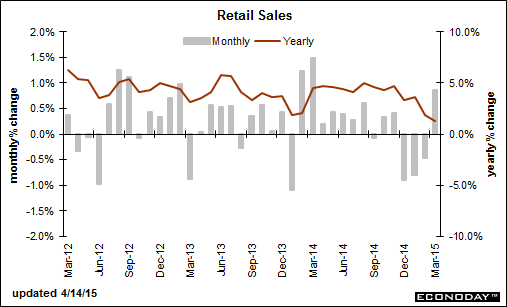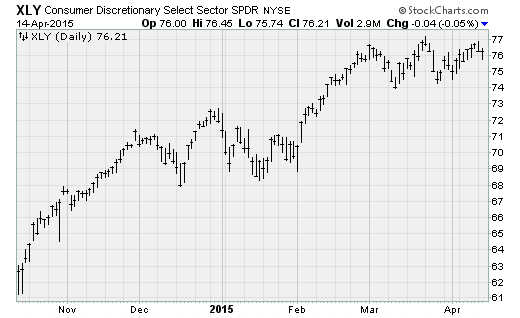Consumers finally have some spring in their step
For the last few months, investors and economists have grown increasingly worried about the health of the U.S. consumer. Retail sales had disappointed for the three months through February, pushing down the year-over-year growth rate to levels not seen since 2009.
Given that this came in the context of impressive job growth, steady income gains and the savings from lower energy prices, it was a bit of a mystery why this was so. The personal savings rate shot up, suggesting that maybe it meant consumers lost confidence in the economy's direction. But most analysts were quick to dismiss the slack shopping as weather-related given the severe winter that hit many parts of the country (with the Northeast suffering the coldest winter on record).
Tuesday's report on March retail sales showed the optimists were right: Consumers came roaring back in March with month-over-month growth surging by 0.9 percent -- a level not seen since early last year. The gain was led by a massive rebound in auto sales, which were up 2.7 percent over February. This reflects both consumer confidence (putting down the cash for a big durable-goods purchase) as well as relatively easy credit conditions for auto loans and elevated used-car prices.
There are big increases elsewhere as well, with furniture and home furnishing, building materials and clothing stores putting in strong performances.
With consumers emerging from their winter hibernation, analysts are pushing up their first-quarter and full-year 2015 GDP growth forecasts. The GDPNow real-time estimate of first-quarter growth maintained by the Federal Reserve Bank of Atlanta's Center of Quantitative Research bottomed out at zero percent earlier this month, but it has since recovered to 0.2 percent. But the critical improvement will be to second quarter and beyond.
Consumer stocks, as represented by the Consumer Discretionary SPDR (XLY), have been in a funk since late February as the market waited for clarity on whether the recent slowdown in spending was truly a result of the cold and snow. Now that shoppers are showing renewed resolve, an upside break above overhead resistance at $77 look likely.
Why? Because the tailwinds consumers are enjoying should continue.
Ed Yardeni at Yardeni Research notes that his Earned Income Proxy, which closely tracks wages and salaries in personal income, is up 1.1 percent over the last three months and had recently disconnected from the path of retail sales minus gasoline, as shown in the chart above. Unseasonably low gasoline prices should help as well: Consumer spending on fuel fell from a $505 billion seasonally adjusted annual rate in November to $428 billion in February before falling further in March.
This is all great news because consumers will need to take the reins of the economy as business investment drops off. The data show they have the wherewithal -- and the desire -- to do it. As long as the roads to the mall are clear of the slushy stuff.



